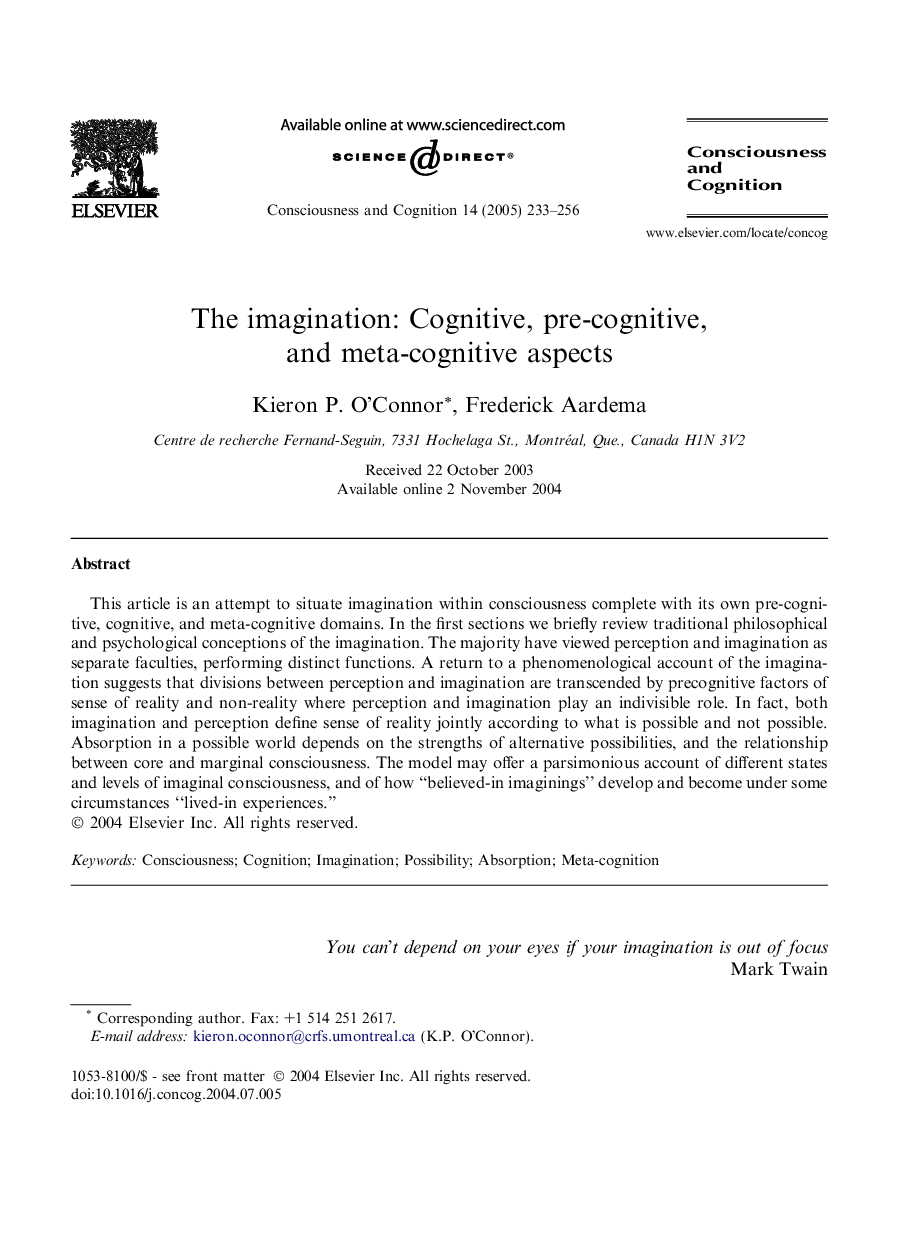| Article ID | Journal | Published Year | Pages | File Type |
|---|---|---|---|---|
| 10458913 | Consciousness and Cognition | 2005 | 24 Pages |
Abstract
This article is an attempt to situate imagination within consciousness complete with its own pre-cognitive, cognitive, and meta-cognitive domains. In the first sections we briefly review traditional philosophical and psychological conceptions of the imagination. The majority have viewed perception and imagination as separate faculties, performing distinct functions. A return to a phenomenological account of the imagination suggests that divisions between perception and imagination are transcended by precognitive factors of sense of reality and non-reality where perception and imagination play an indivisible role. In fact, both imagination and perception define sense of reality jointly according to what is possible and not possible. Absorption in a possible world depends on the strengths of alternative possibilities, and the relationship between core and marginal consciousness. The model may offer a parsimonious account of different states and levels of imaginal consciousness, and of how “believed-in imaginings” develop and become under some circumstances “lived-in experiences.”
Related Topics
Life Sciences
Neuroscience
Cognitive Neuroscience
Authors
Kieron P. O'Connor, Frederick Aardema,
